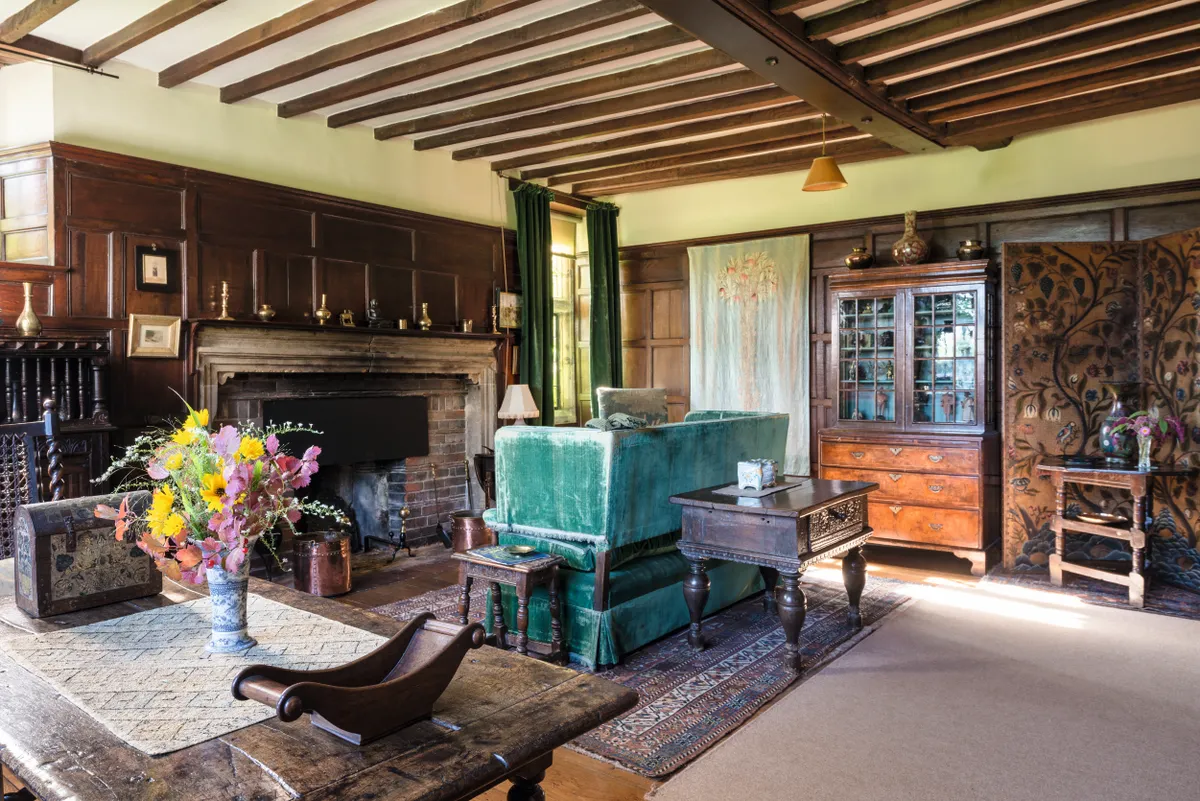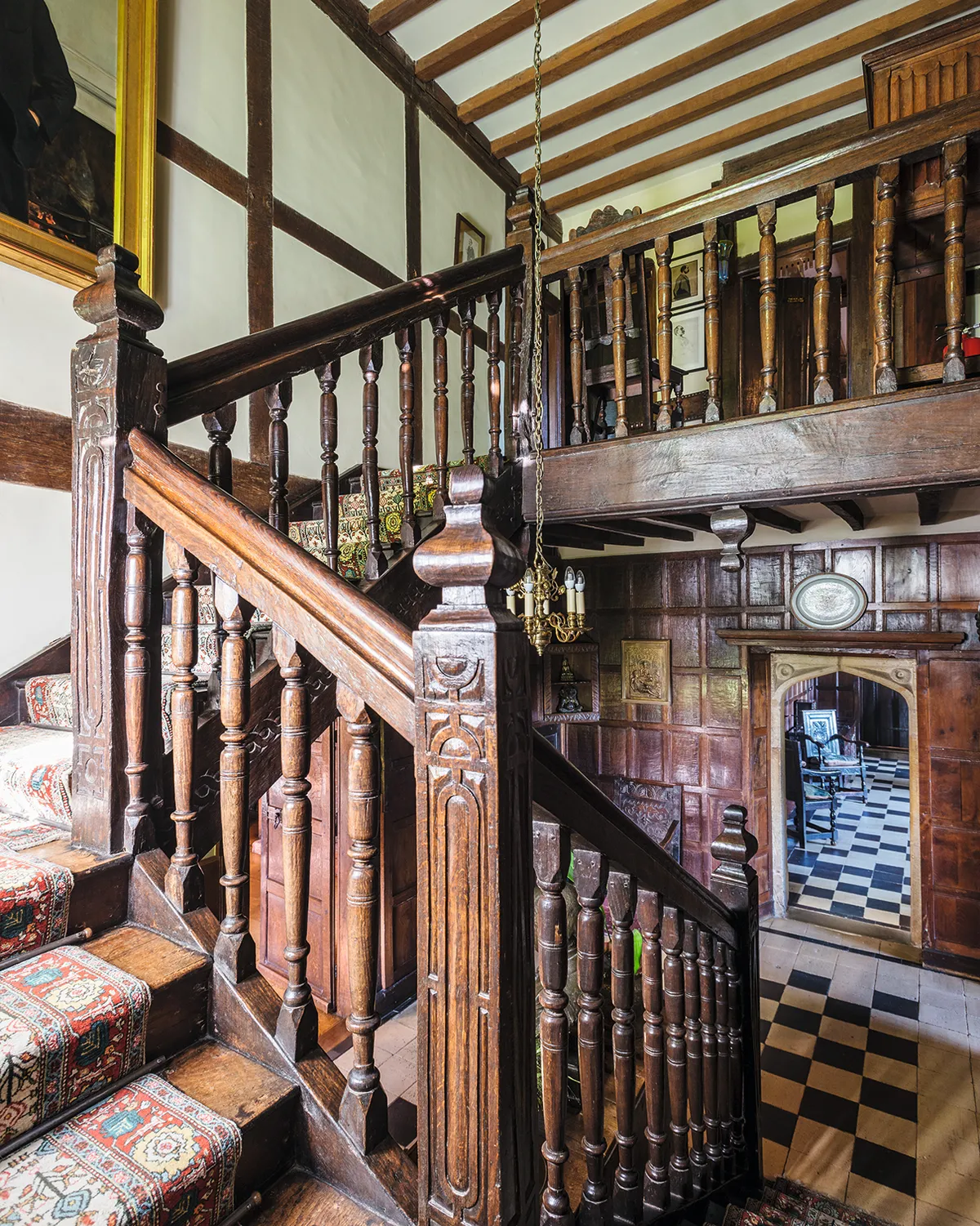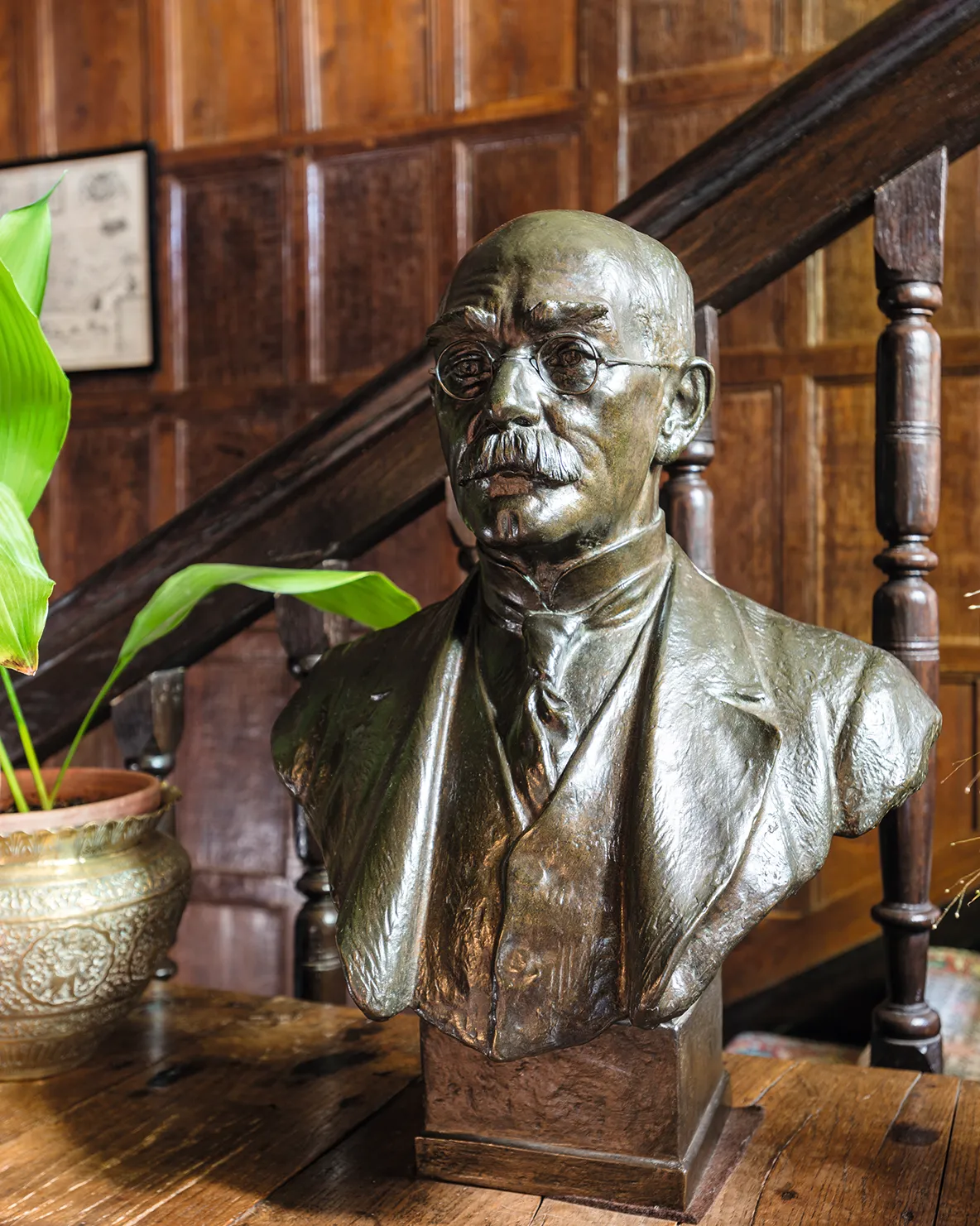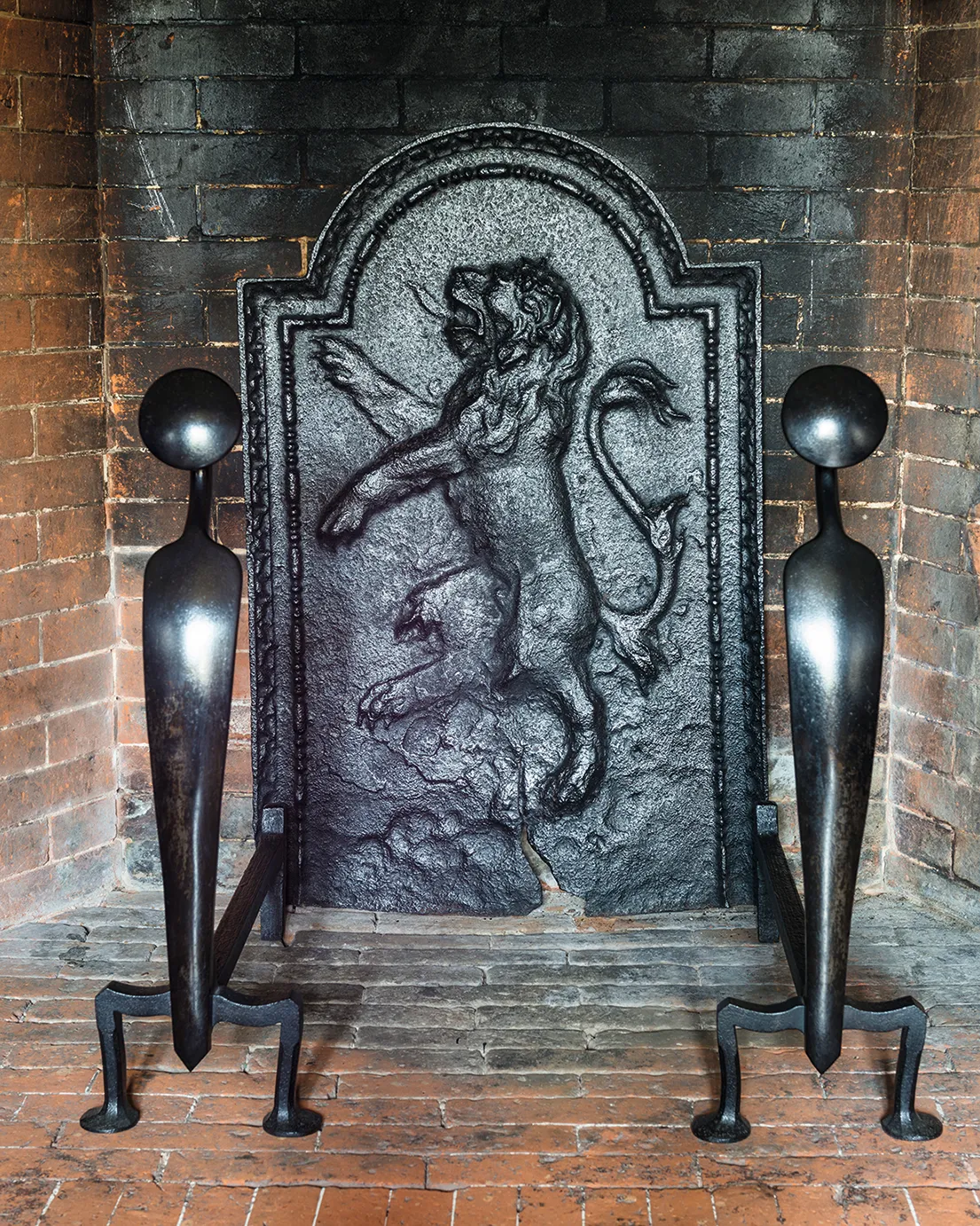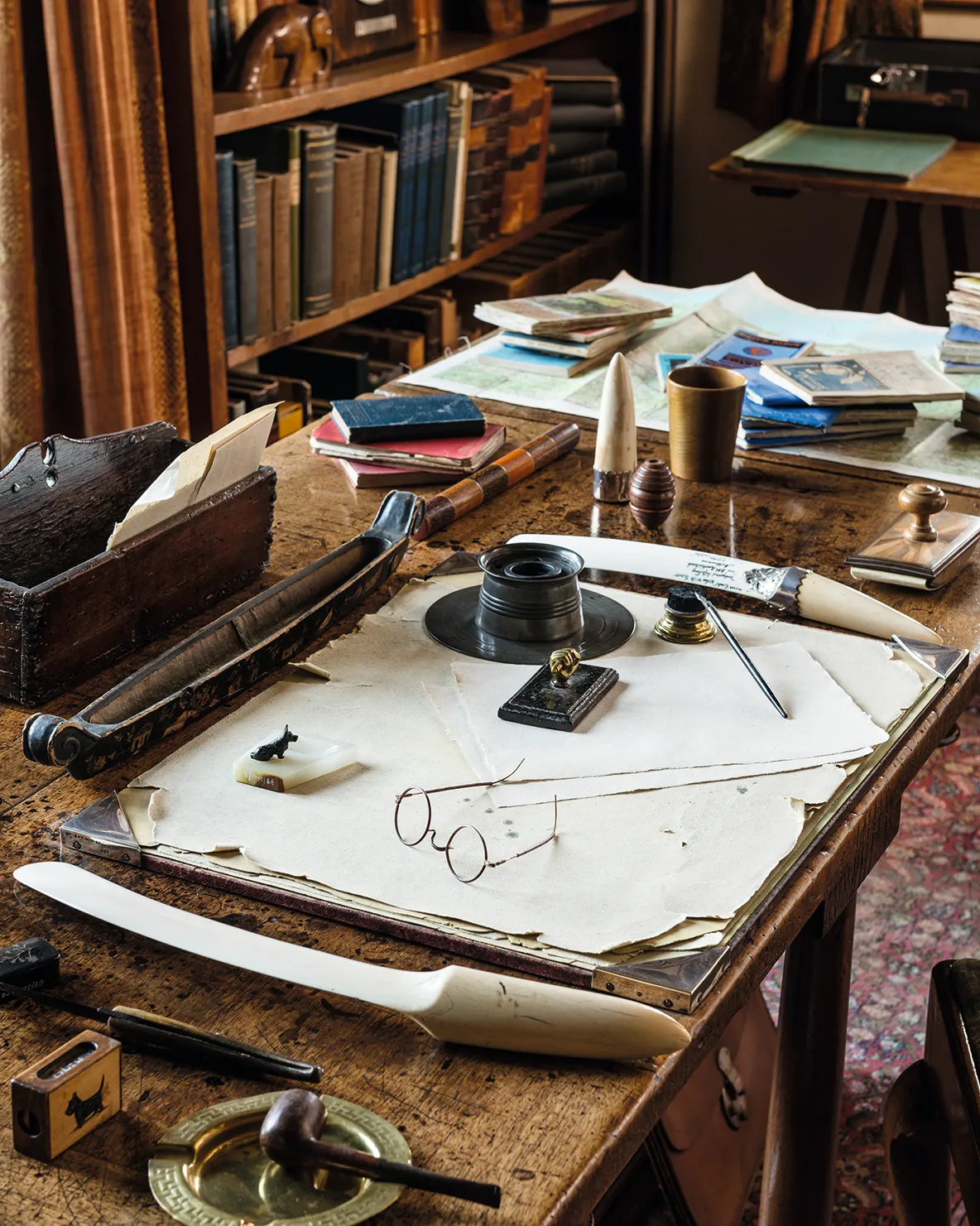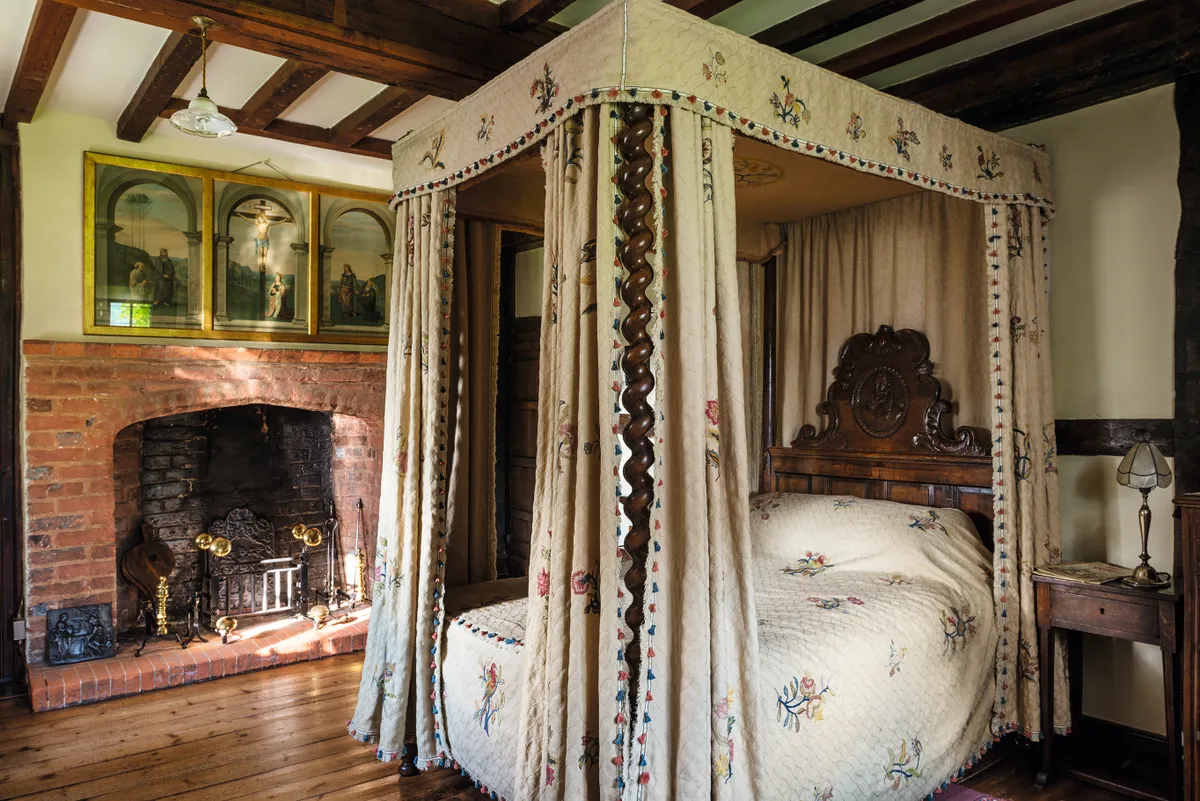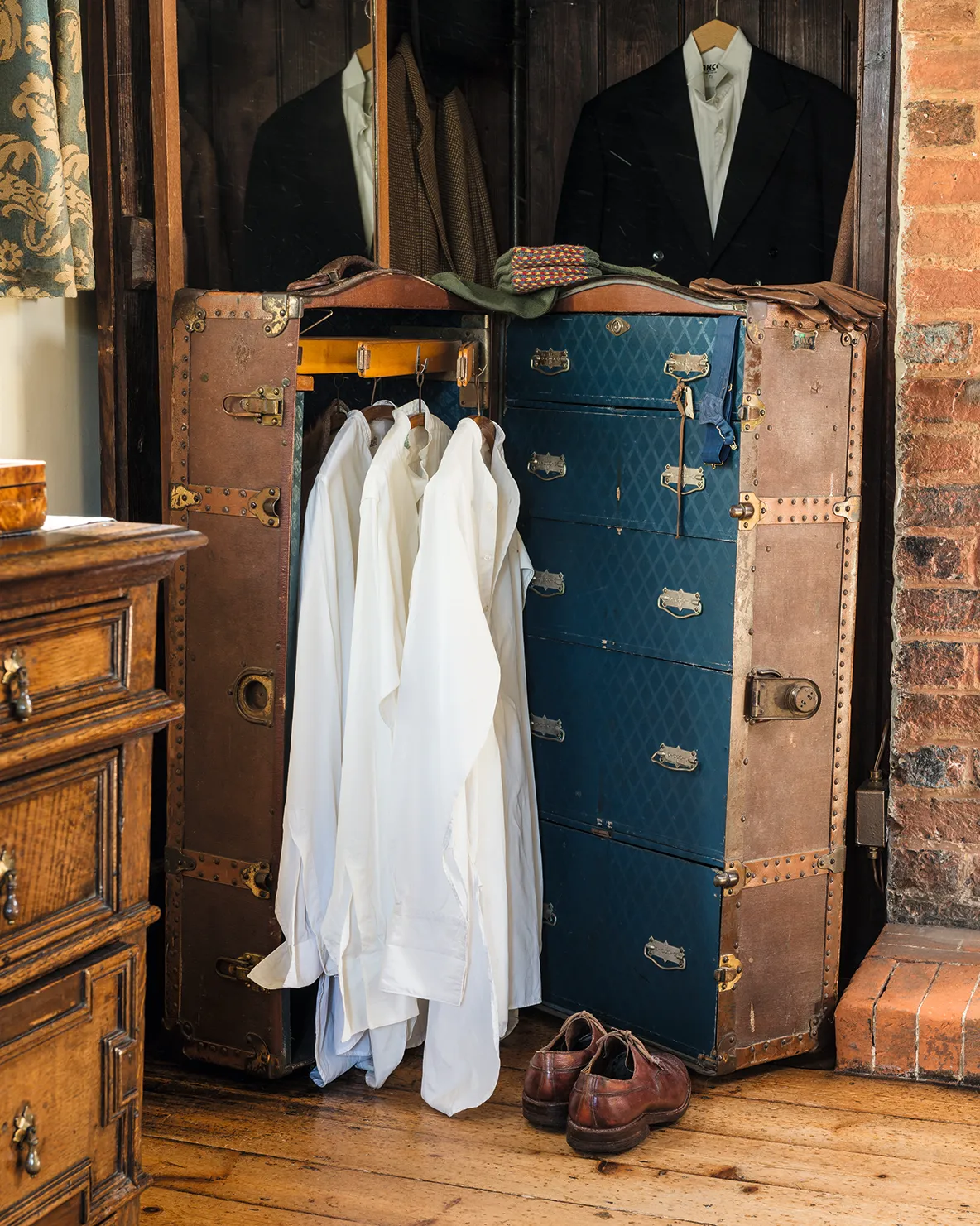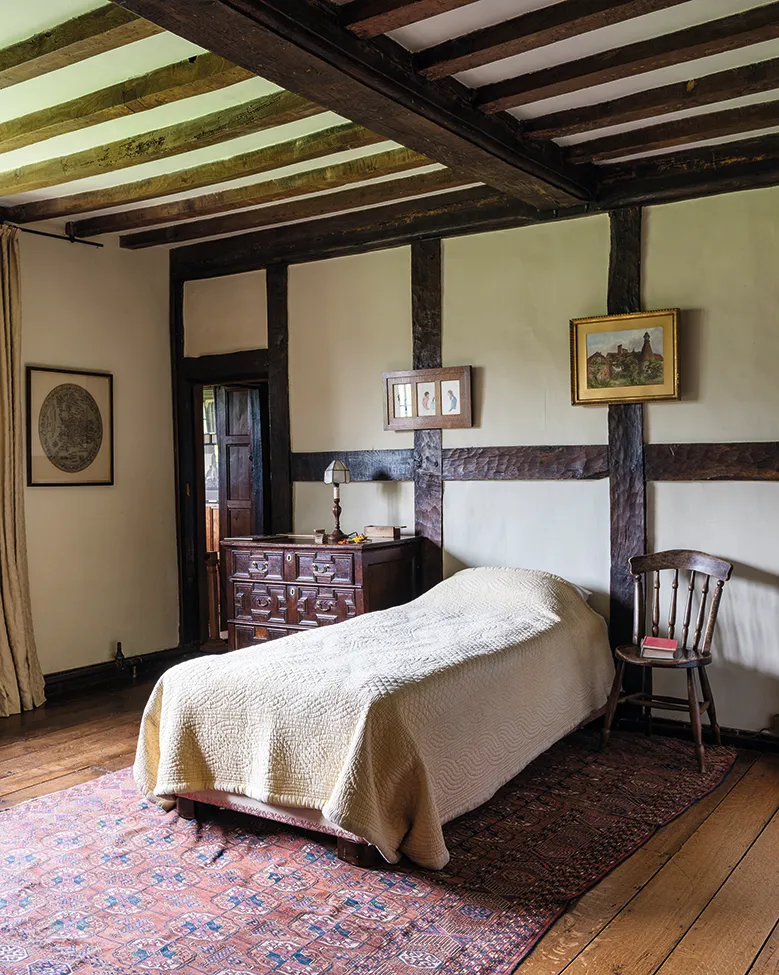Built from honey-coloured sandstone quarried nearby, with a roof of Wealden clay tiles and beams hewn from local oak, Bateman’s is inseparable from its surroundings. ‘To me, the house feels as if it grows straight out of the valley; it is part of the landscape,’ says Gary Enstone, curator of Rudyard Kipling’s family home. The author and his wife, Carrie, took up residence in this Sussex backwater in 1902.
It was partly his celebrity that drove him to seek sanctuary from prying eyes. Kipling was in his mid-thirties and at the height of his literary fame. ‘It’s hard to comprehend now but, at the time, Kipling’s face was said to be one of the three most recognisable in the world. Only Queen Victoria and W. G. Grace surpassed him,’ explains Gary.
The remoteness of Bateman’s appealed because intrusive admirers had made life at Kipling’s previous home on the south coast intolerable. People sat on his doorstep, hindering access to his front door, the local landlord capitalised on his proximity to the writer, and tradesmen didn’t cash his cheques, ‘because the value of the signature was worth more than the sum he owed’.
Compounding the strain came family tragedy: the death of his six-year-old daughter, Josephine. ‘Afterwards, Kipling said he felt as if the house was haunted by her, and he had to find somewhere new,’ says Gary. From the outset, the Kiplings were captivated by Bateman’s. ‘Having grown up in India at the height of Empire, he had a romantic vision of an English country home. Everything about the house represented this; he said it didn’t have a bad brick or bone in its body,’ says Gary.
You might also like an antiques-filled farmhouse in Sussex
The dilapidated building the Kiplings bought was very different from the well-tended one we see today. There was much to do, and the couple approached renovation with care, conscious of the house’s Jacobean origins. Modern technology was gently introduced: a couple of bathrooms and a primitive heating system were installed, and a water-powered turbine provided enough electricity for eight lightbulbs for four hours.
Similar care was taken in choosing the furnishings, which remained in the house when it was taken over by the National Trust in 1939. ‘There are pieces from around the world, but they were very particular about what they had, and none of it jars,’ says Gary. There is also evidence of Kipling’s interest in the Arts and Crafts movement. One of the gems at Bateman’s features in a new book of National Trust treasures: an exquisite embroidery depicting an orange tree, designed by May Morris and once used as a door hanging.
Fastidious taste didn’t prevent Bateman’s from becoming a relaxed family home, however. ‘Kipling spent the morning writing, and the afternoons were playtime. There’s evidence that the Parlour was the family room of the house. Around the room is an array of souvenirs brought back from travels to India, Japan, Brazil, America and the Middle East, among them silver decanters from India, Indian brass deities and copper ewers from Kashmir.
You might also like best Poet's houses to visit around the UK
The aura of the man who once lived here is most powerfully felt in the Study upstairs. The walls lined with books represent Kipling’s working library, and many volumes are filled with his notes. The desk, strewn with belongings and caked in ink stains, is a replica of the one in the Parlour, with extensions added.
‘When he was working, Kipling would often lie on the daybed musing, in a comatose state, and then, with a sudden burst of energy, sit at the desk and write in a frenzy, ink going everywhere. Afterwards, he’d reappear, dazed and shirt splattered in ink,’ says Gary. Despite his popularity in the early 20th century, controversy shadows Kipling. Six years after Kipling’s death, George Orwell commented, ‘every enlightened person had despised him... but nine-tenths of those enlightened persons are forgotten, and Kipling is in some sense still there’.
In light of the reappraisal of colonialism and Empire, has Kipling’s home been tarnished? Gary takes a nuanced view. ‘In today’s context, many of his views are inappropriate, but we do try to talk about all aspects of him; some positive some negative. We want everyone to feel comfortable and people have to come to their own conclusions. We have done that for decades.’
To Gary, the uniqueness of Bateman’s lies in the sense of authentic family life it represents. ‘It isn’t a show house. It has all the tattiness, wear and dog scratches, so you feel a direct connection to the people who lived here. It’s as if the Kiplings have just gone for a long walk, and the house is ready for them to return.’
